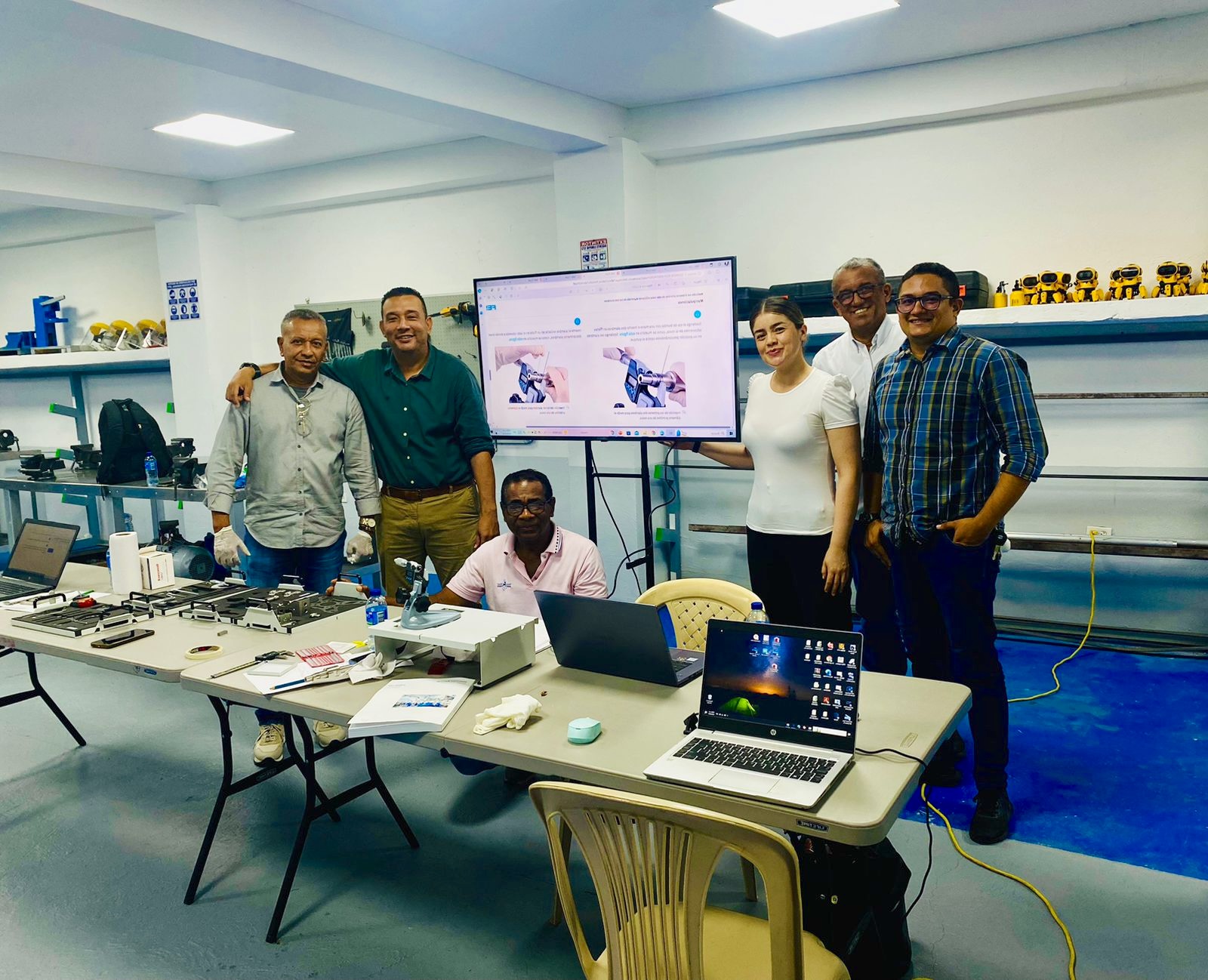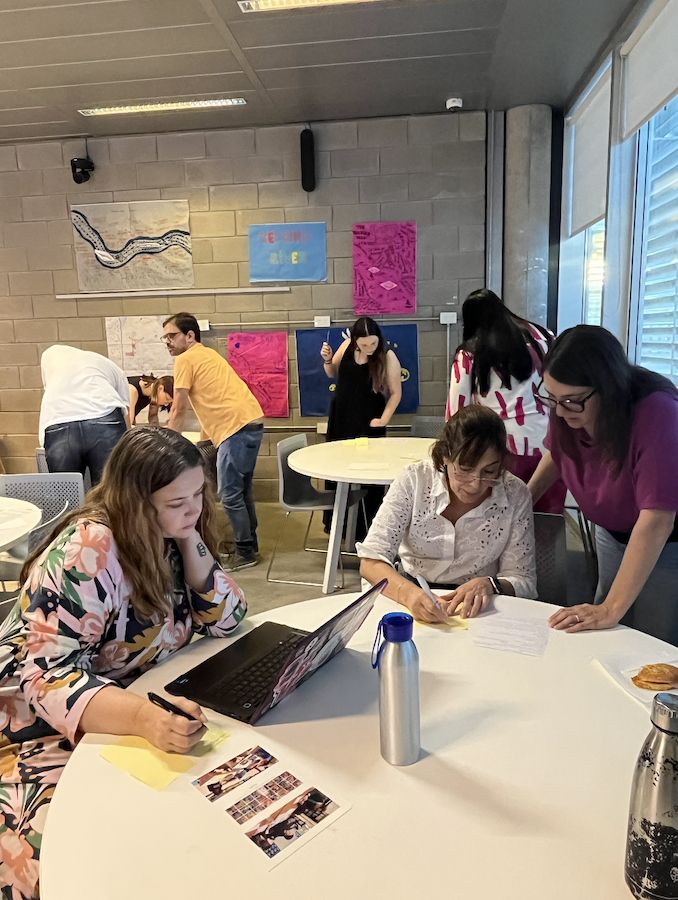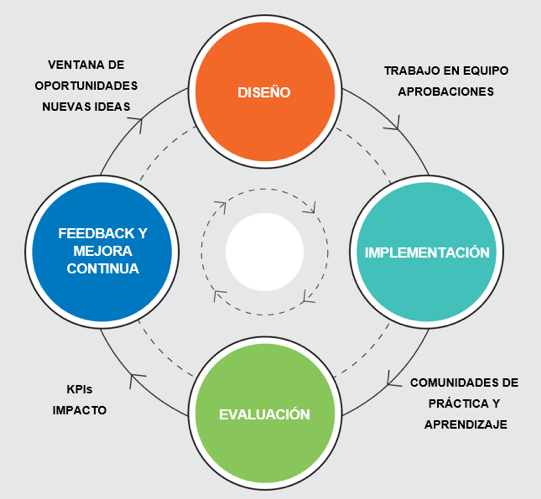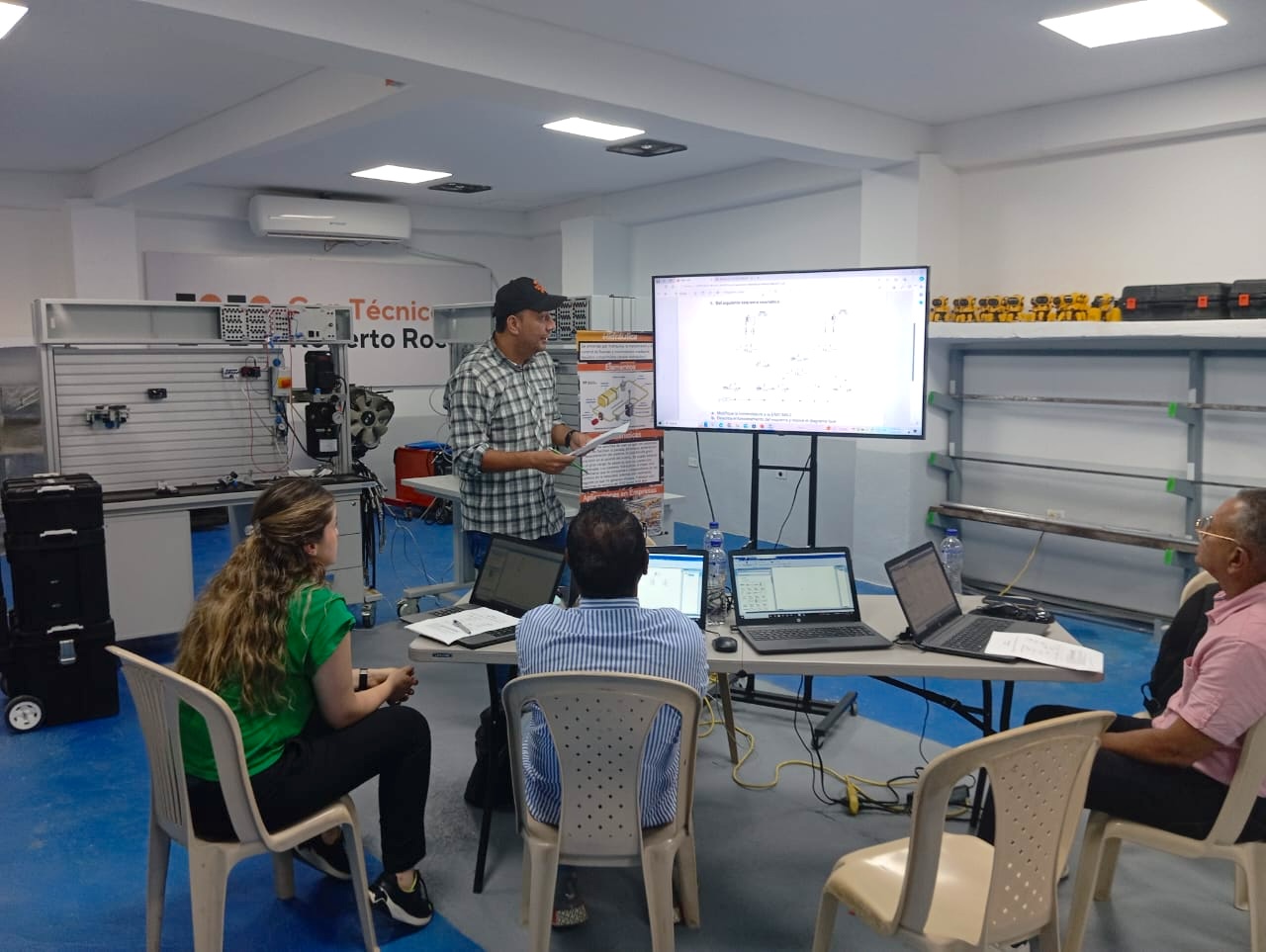By Bruna Bellis and María Lourdes Ollivier. In the educational programs of the Techint Group, the continuous improvement cycle is focused on the students, therefore material, human, and financial resources are directed towards achieving the goal of fostering their development.

“Constant change and progress have long been hallmarks of the modern era. (…) Education must respond to the needs arising from this cultural shift, not only by proposing curricular changes but also by considering organizational and management adjustments as integral parts of this transformation.” (Aguerrondo, 1996)[1]
The concept of continuous improvement is often associated with the strategic approach of a company or industrial project aimed at optimizing processes over time, which significantly contributes to success and efficiency. At the Techint Group, the pursuit of continuous improvement is embedded in all activities, both in the industrial processes of its companies and in the educational programs developed alongside communities. As early as 1993, Roberto Rocca, one of the Group’s founders, referenced the integration of business, education, and development in an article for Entelequia magazine.[2]
Within the Roberto Rocca Educational Programs, continuous improvement focuses on students, directing all material, human, and financial resources toward the objective of fostering their development, with education as a key tool for individual and social progress. This is achieved through action lines that engage each involved actor, emphasizing systemic and strategic thinking, as well as organizational learning.

Systemic and strategic thinking provides the framework for reflection and goal analysis, guiding the implementation of the Roberto Rocca Educational Programs in their specific context. Organizational learning consists of top-down and bottom-up processes that foster internal and external communication, continuous feedback on achievements, opportunities for improvement, and demands. This evaluation process supports collective knowledge-building, leading to innovation and enhancing the added value of educational processes.
The top-down strategy is designed based on global evidence, supported by subject-matter experts, and implemented locally by regional teams. Implementation monitoring is conducted through both global and local Communities of Practice and Learning, composed of collaborators from various programs and communities. These communities facilitate dialogue, reflection, and knowledge exchange, serving as part of ongoing professional development. This sustained and intentional reflection promotes the construction of vibrant cultures focused on continuous learning for the entire educational community, both directly and indirectly[3]. Once a year, Community of Practice and Learning leaders submit identified improvement opportunities to a committee; once validated by the governance of the Roberto Rocca Educational Programs, they are incorporated into the original design (bottom-up).

Another essential aspect is transparency and outcome measurement, which guides decision-making for continuous improvement of the management model. Global program leaders participate in the communities of practice and learning, analyze indicators, propose improvement plans, and become part of a collective, networked organization that learns and strengthens the system through integration and feedback.
In the Roberto Rocca Educational Programs, this continuous improvement cycle unfolds through four stages illustrated in the following diagram, summarizing the points mentioned above:
Continuous Improvement Cycle - Roberto Rocca Educational Programs

The cycle begins with the strategic design of proposals and actions for the Roberto Rocca Educational Programs over the long term, which is only possible through the collaboration between the Techint Group’s global vision and local implementation within each community’s context. These educational strategies then enter the implementation phase, initiating an iterative process of practice and constant learning through communities. Regular evaluations of these designs’ implementation quality are crucial in the continuous improvement cycle. Using standardized indicators across regions and aligned with program models, it’s assessed whether objectives are being met. This process continues with the feedback stage, where necessary dialogues are established for both the development of our professionals and program improvement.
In the medium and long term, this continuous improvement cycle enables the evolution of our programs, which, enriched by experiences and exchanges within both local and global contexts, as well as advances in industry, science, and education, find opportunities to strengthen internally—even revisiting design aspects if conditions change.
[1]Aguerrondo, I. (1996). La escuela como organización inteligente. Buenos Aires: Editorial Troquel.
[2]"La educación afecta el desarrollo humano en sus aspectos culturales, sociológicos, calidad de vida, desarrollo económico. El desarrollo económico es sólo una de las finalidades de la educación”. Roberto Rocca (1993). Empresa y educación. Educación y empresa. Revista Entelequia.
[3]Hargreaves, S., & Shirley, D. (2009). The Fourth Way: The inspiring future for educational change. California: Corwin.
BIOS
Bruna Bellis. Manager of the Extra Clase Roberto Rocca educational program and active since 2016 in Community Relations at the Techint Group. She graduated in Public Relations and is currently pursuing a master’s degree in Sustainability in São Paulo, Brazil.
www.linkedin.com/in/brunabellis/
María Lourdes Ollivier. Specialist in Pedagogy and Continuous Improvement for the Roberto Rocca Educational Programs, Community Relations, Techint Group. She worked for five years at the Roberto Rocca Technical School. Teacher and Psychopedagogy graduate, Specialist in Education in Buenos Aires, Argentina.
